The business results and profits of Saigon Jewelry Company (SJC) from 2012 to 2024 have always been in a state of ups and downs, with many times decreasing sharply.
2012 was the year Decree 24 was issued, from then on, SJC gold was managed by the State Bank (SBV), this enterprise was only a gold buying and selling and processing unit (re-stamping dented gold that did not meet circulation standards) but no longer produced gold bars as before.
First time making a profit of 100 billion in 2024
According to SJC's audited financial report, in 2024, the company's revenue increased by nearly VND 4,000 billion compared to the previous year, reaching VND 32,193 billion.
Along with high revenue, profits also surged in 2024. The company reported a 4.6-fold increase in after-tax profit compared to 2023, up to VND283 billion. This is SJC's highest profit in the past 10 years. Notably, this figure increased by VND213 billion compared to the plan submitted by SJC to the Ho Chi Minh City People's Committee.

SJC is the only unit allowed to stamp gold bars with national brand in Vietnam from 2012 to present according to Decree 24.
By the end of 2024, SJC will have total assets of more than VND 2,000 billion, an increase of nearly VND 200 billion compared to 2023. The company has 27 affiliated units, subsidiaries and associated companies.
2024 is the year of record-setting gold market, with the domestic gold price fluctuating the most. At the beginning of the year, each tael of SJC gold bar sold for about 74 million VND, by the end of the year, the selling price was about 84 million VND/tael, but the highest level set was 92.4 million VND/tael on May 10, 2024, equivalent to an increase of nearly 20%.
In total, domestic gold bars in 2024 reached peaks 21 times.
Also in 2024, the SBV used many measures to stabilize the gold market and narrow the gap between domestic and international gold prices. In particular, for the first time, this agency sold gold bars directly to people through 4 state-owned commercial banks and SJC. This is an unprecedented intervention in the SBV's gold market management and operation.
Nearly 13.3 tons of gold were sold to the market in 2024. Previously, in the 10 years from 2014 to 2023, the State Bank did not increase the supply of SJC gold bars to the market. In 2013, nearly 70 tons of gold were sold by the State Bank.
From the beginning of 2025, SJC gold bars reached 124 million VND/tael at one point, with the selling price at the end of May 29 at 118 million VND/tael.
Revenue of tens of thousands of billions, profit of tens of billions
SJC is the only gold trading enterprise 100% owned by the State, under the People's Committee of Ho Chi Minh City, established in 1988. In 1989, SJC launched the first gold bar product under the brand name Golden Dragon SJC 9999, including 1-chi, 2-chi, 5-chi, 1-luong pieces...
In the Vietnamese gold market, SJC gold bars have the greatest influence. People who buy gold, especially from 2012 to now, think of SJC, but this is not the type of gold but the brand of gold bars. The exclusive position of SJC gold bars comes from Decree 24 of the Government, issued in 2012 with the goal of stabilizing the gold market, preventing the "goldification" of the economy , and strictly managing the production and trading of gold bars.

2024 is the first year in more than 10 years that SJC has a profit after tax of up to 283 billion VND. (Illustration photo: Ha Linh)
According to this regulation, the State has a monopoly on the production of gold bars; the State Bank is the organizing and managing agency and has chosen SJC as the national gold bar brand to produce according to approved quotas and plans. Other enterprises are not allowed to produce gold bars.
Therefore, SJC is the only unit allowed to stamp gold bars with national brand in Vietnam from 2012 to present.
This year, SJC submitted a business plan with revenue of more than 34,897 billion VND, about 2,700 billion VND higher than the actual level in 2024. Profit after tax was at 88.9 billion VND, while the profit of the previous year was up to 283 billion VND.
The company also said it would reprocess 20,074 dented gold bars and focus on jewelry production and sales. The expected number of jewelry items sold is 503,858, up from 444,912 in 2024.
The company also sets out an investment orientation for jewelry production and trading, with the goal of becoming one of the leading enterprises in jewelry production and trading, expanding market development, and bringing the SJC brand to Southeast Asia.
One thing worth noting is that although SJC's revenue is always at tens of thousands of billions of VND, its profits are very low. Except for 2024, in the 10 years from 2013 to now, the company's after-tax profit has not exceeded 100 billion VND.
As of 2023, this largest gold trading enterprise recorded a revenue of more than VND 28,400 billion but after-tax profit was only nearly VND 61 billion. The reason for the low profit is explained by the fact that the cost of gold trading accounts for 99% of revenue.
In 2022, this enterprise also recorded revenue of more than 27,153 billion VND, a sharp increase compared to the figure of more than 17,689 billion in 2021 - a year heavily affected by COVID-19. However, the profit earned was quite modest, only nearly 49 billion VND. Meanwhile, in 2021, revenue was more than 17,689 billion VND but profit after tax reached nearly 44 billion VND.

One reason SJC said its revenue is high but its profit is lower than other companies in the same industry is because it operates in the gold bar business, with low profit margins. (Illustration: Ha Linh)
Or in 2020, the company had revenue of nearly 23,500 billion VND, profit after tax of more than 55.7 billion VND. Previously, in 2019, SJC had sales and service revenue - mainly gold trading activities reaching more than 18,600 billion VND, profit after tax of nearly 53 billion VND.
2017 was also the year SJC recorded a high increase in revenue of nearly 23,000 billion VND and a profit after tax of more than 81.3 billion. However, in 2018, the company's revenue decreased by more than 2,000 billion VND and its profit after tax was surprisingly low, only nearly 28 billion VND.
In 2016, SJC's revenue also reached more than 21,593 billion VND, after-tax profit was more than 63.3 billion VND...
In fact, before the monopoly of gold bars, in 2012, this enterprise had a revenue of more than 72,087 billion VND, profit after tax of more than 294.5 billion VND. But a year later, the revenue dropped to only more than 27,667 billion VND; profit after tax was also only more than 190 billion VND. Total assets also decreased sharply from more than 3,092 billion VND in 2012 to more than 1,804 billion in 2013.
Compared to the same industry company PNJ, in 2012, SJC's revenue was more than 10 times PNJ's revenue (about 6,428 billion VND) and PNJ's after-tax profit was just over 225 billion VND.
But in 2024, PNJ's after-tax profit will reach more than VND 2,110 billion, nearly 10 times higher than SJC, while PNJ's revenue will also exceed SJC, reaching more than VND 38,232 billion.
Sharing at the Ho Chi Minh City's regular socio-economic press conference in 2024, a representative of SJC once said that the company did not benefit from being selected as the exclusive unit for gold bars and national brands. The company's profits have decreased sharply since 2012 due to not being able to produce or import gold.
At a working session with the Central Policy and Strategy Committee on mechanisms and policies for effective management of the gold market on the afternoon of May 28, General Secretary To Lam acknowledged that mechanisms and policies for managing and regulating the gold market have not kept up with the market's development and need to be urgently innovated and improved.
The General Secretary requested to quickly amend Decree 24 towards a market-oriented and tightly controlled roadmap; creating a more effective connection between the domestic and international markets.
Request to eliminate the State monopoly on gold bar brands in a controlled manner, in principle the State still manages production activities, but can grant licenses to many qualified enterprises, creating an environment of equal competition, helping to diversify supply sources and stabilize prices.
Expanding controlled import rights to increase supply, contributing to reducing the gap between domestic and world prices, limiting smuggling...
Source: https://vtcnews.vn/how-sjc-worked-in-hon-10-nam-doc-quyen-vang-mieng-ar946017.html


![[Photo] Prime Minister Pham Minh Chinh chaired a meeting to evaluate the operation of the two-level local government model.](https://vphoto.vietnam.vn/thumb/1200x675/vietnam/resource/IMAGE/2025/10/29/1761751710674_dsc-7999-jpg.webp)
![[Photo] Hue: Inside the kitchen that donates thousands of meals a day to people in flooded areas](https://vphoto.vietnam.vn/thumb/1200x675/vietnam/resource/IMAGE/2025/10/29/1761738508516_bepcomhue-jpg.webp)


![[Photo] Prime Minister Pham Minh Chinh chaired a meeting to discuss solutions to overcome the consequences of floods in the central provinces.](https://vphoto.vietnam.vn/thumb/1200x675/vietnam/resource/IMAGE/2025/10/29/1761716305524_dsc-7735-jpg.webp)










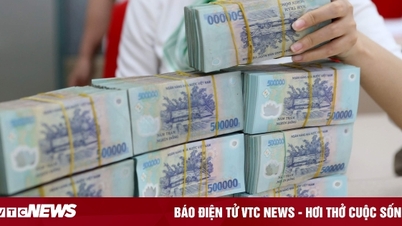















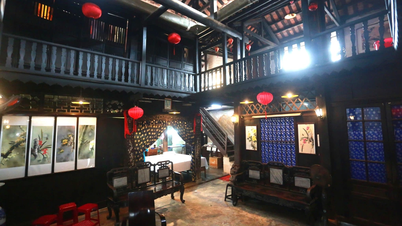
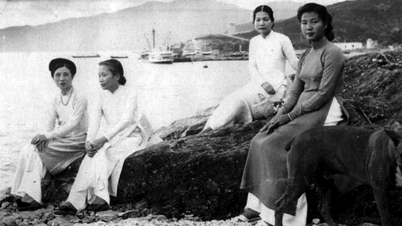
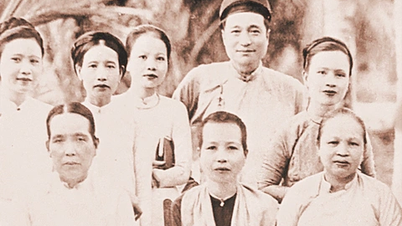














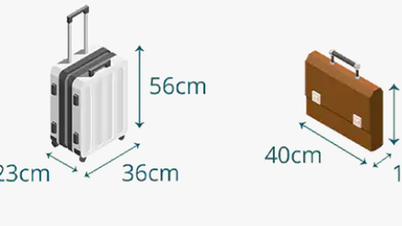


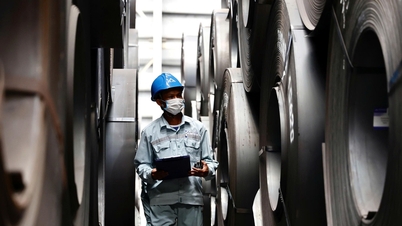
















![[Live] Concert Ha Long 2025: "Heritage Spirit - Brightening the Future"](https://vphoto.vietnam.vn/thumb/402x226/vietnam/resource/IMAGE/2025/10/29/1761743605124_g-anh-sang-am-thanh-hoanh-trang-cua-chuong-trinh-mang-den-trai-nghiem-dang-nho-cho-du-khach-22450328-17617424836781829598445-93-0-733-1024-crop-1761742492749383512980.jpeg)





























Comment (0)